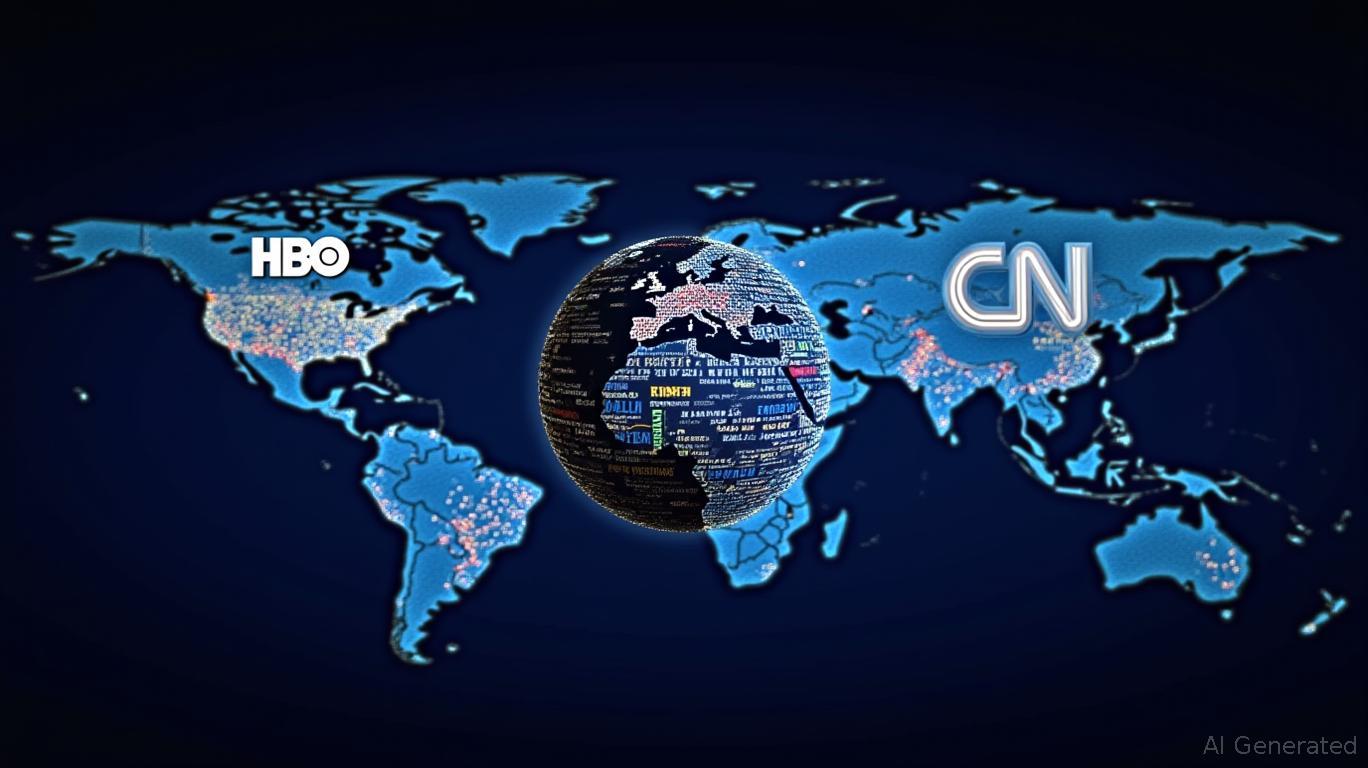Streaming Ahead: How Warner Bros. Discovery's Split Could Unleash Hidden Value
Warner Bros. Discovery's (WBD) June 2025 announcement to split into two independent public companies—Streaming & Studios and Global Networks—marks a bold restructuring aimed at unlocking shareholder value in an era of shifting media consumption. By divorcing its high-growth streaming ambitions from its legacy linear networks, WBD is signaling a strategic pivot to prioritize operational agility and financial discipline. But will this split truly deliver the promised returns, or is it a risky bet on two very different futures?
The Split: A Strategic Divorce or a Masterstroke?
The separation is designed to address a stark reality: streaming platforms like HBO Max are growing in subscribers and revenue, while traditional linear networks (e.g., CNN, TNT) face declining ad revenues and audience attrition. By splitting into two entities, WBD aims to:
1. Focus Capital Allocation: Streaming & Studios can invest aggressively in content and global expansion, while Global Networks can optimize margins and cash flow from its stable, cash-generative assets.
2. Debt Management: The $38 billion debt burden—amassed from Discovery's 2022 acquisition of WarnerMedia—can be redistributed strategically. The $17.5 billion bridge loan from J.P. Morgan will support debt restructuring, with Global Networks retaining a 20% stake in Streaming & Studios for future monetization.
3. Shareholder Clarity: Investors will no longer have to bet on two conflicting trajectories in one stock.

Streaming & Studios: Betting on the Next HBO
This division, led by CEO David Zaslav, inherits WBD's crown jewels: HBO,
. Studios, and DC Comics. Its mandate is clear:- Expand HBO Max's Global Footprint: The platform plans to enter new markets by 2026, capitalizing on its library of films, TV shows, and sports content.
- Boost EBITDA Margins: HBO Max's Q1 2025 adjusted EBITDA of $339 million was a bright spot amid WBD's $453 million net loss. The goal is to hit at least $3 billion in annual EBITDA, a stretch target requiring cost discipline and subscriber growth.
- High-Risk, High-Reward Content: Films like The Pitt and series like Sinners will be critical to attracting audiences and justifying premium pricing.
Global Networks: Stability in a Volatile Landscape
The Global Networks division, under CFO-turned-CEO Gunnar Wiedenfels, will manage the 1.1 billion viewers of CNN, TNT, Discovery channels, and regional networks. Its strengths:
- Cash Flow Reliability: Linear TV and free-to-air channels generate steady margins, even as ad dollars shift online.
- Digital Synergy: Platforms like Discovery+ and CNN's new streaming service can tap into existing audiences.
- Geopolitical Resilience: Global Networks' reach into 200 countries (including fast-growing markets like India and Southeast Asia) offers diversification.
Risks and Red Flags
The split is not without hurdles. First, the $38 billion debt overhang remains a liability, especially if debt reduction targets (e.g., lowering leverage ratios) aren't met. Second, content performance is binary: hits like The Batman or misses like The Matrix Resurrections can swing profitability. Third, regulatory approvals and tax-free status are critical to avoiding a costly stumble.
Analysts also note execution risk: Zaslav and Wiedenfels must retain top talent and partnerships, while navigating potential legal challenges from investors or regulators.
Investment Takeaways: A Buy, Hold, or Sell?
For investors, the split presents a nuanced opportunity:
1. Buy the Split If…
- WBD can deleverage its debt and demonstrate margin improvements in both divisions.
- HBO Max achieves its EBITDA targets and expands into Asia effectively.
- Global Networks maintains cash flow despite ad market headwinds.
- Hold Until…
- Q2 2025 earnings provide clarity on debt reduction and content performance.
The separation's tax-free status and regulatory approvals are confirmed.
Sell If…
- Debt remains stubbornly high, or Global Networks' margins compress further.
- Streaming competition (e.g., Disney+, Netflix) outpaces HBO Max's growth.
Final Analysis: A Necessary Evolution
The split is less about speculation and more about survival. By carving out two distinct entities with clear mandates, WBD is finally addressing the structural inefficiencies of its merger-driven growth. While risks abound, the strategic logic is compelling: focus on what works, monetize what can be optimized, and give shareholders clarity.
For investors, this is a “watch and wait” scenario. The next 12 months will test whether WBD's bold restructuring can turn a $453 million quarterly loss into a blueprint for value creation. If the split succeeds, it could redefine how media giants navigate the streaming era—and that's a story worth betting on.
Disclosure: This analysis is for informational purposes only and not a recommendation to buy or sell securities.

Comments
No comments yet